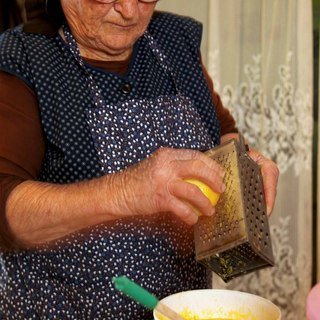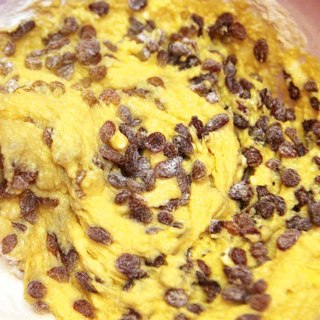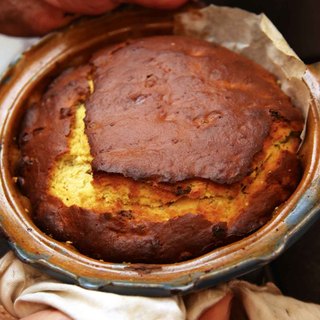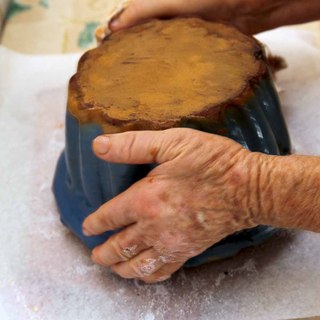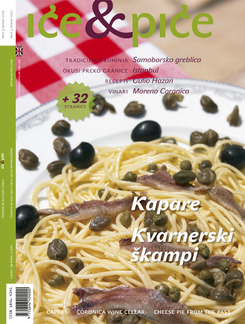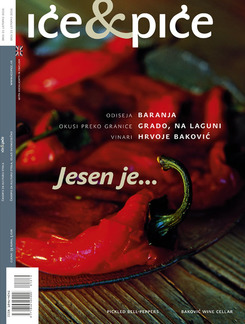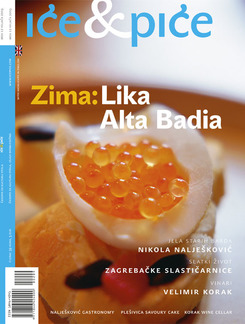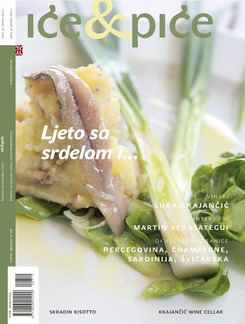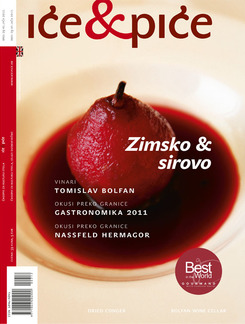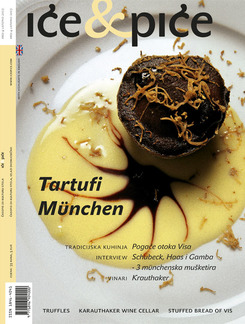Culinary history is always bedevilled with its reciprocal influences and appropriations, composed of tales, traditions and facts. In the evasive etymology of kitchen smells facts give way to rumours. And so the story about our kuglof will be composed of legend, history and gossip. Like all celebrated dishes, kuglof too is accompanied by a mass of legends that write out the (hi)story of this cake. Who could possible say which oven this leavened dough cake first issued its fragrance? Did it originate in Germany, which could be concluded from its name; in the French province of Alsace, where there is actually a kuglof festival, or did Vienna – as it did with vanilla crescents and croissants – use it to celebrate the raising of the Ottoman siege of the city at the end of the 17th century?
Speaking in general, the kuglof draws on a long tradition of sweet breads used to celebrate the interruptions to the everyday world. Even the poorest table had, during holy days, to give a picture of the longed-for prosperity, a sacrifice of thanks and a gage to the plenty to come in time. The major symbol for food, it was logical that bread should be addressed with particular concern, and holiday breads are in many ways more like cakes. Just like the Italian bread for Christmas, panettone, or our own Eastertide pinza, to mention but a few, kuglof has a light and airy dough made with yeast, milk, butter and eggs, which give it a golden tint. All the variants of the basic recipe are prepared in a round mould with fluted sides and a hole in the centre. At first the kuglof pans were of clay, and later of metal, mostly copper and very decorative, a wonderful decoration on the walls of middle class kitchens on the early 20th century. Local and regional differences in the recipes are manifold, but today the name kuglof, of kougelhupf, gugelhupf, bundcake... are used for a cake with a characteristic ring-shaped form, similar to a turban or hood, to which it obviously owes the name.
When the material traces vanish, and there are many stories, perhaps it is most reliable to follow the etymology. The name gugelhupf, used in southern Germany and Austria probably comes from the word for hood, gugel, while Hupf, according to one, if not the only, interpretation, comes from the verb lupfen, meaning to discover or raise. A round cake with a hole in the centre really could recall a monk’s hood (the same that gave the name cappuccino). Undoubtedly more recent, the form of writing kuglof or kouglof comes from the German word for bowl, kugel, which again reveals the shape of the cake. But in the legends that have been woven to discover and inscribe the history of this dish, hoods are not mentioned at all. But another headgear is mentioned, that which, we find from the tale, has not always meant a threat, but gave a hint of the oriental origin of the dish. But let’s start at the beginning.
Legend
Once long ago, one dark night, three weary travellers from the east knocked at the gate of the Alsatian town of Ribeauville. The hospitable citizens kindly gave them a rest for the night. They lodged the travellers, and by the warm fireside and with food, learned they were coming back from distant Bethlehem where they had gone following a star. The guests from such a distance could have told much of this, but their stories must have been startling and dismaying. The unusual guests soon, rested, continued their journey, and as a mark of gratitude, left the tavern-keeper who had received them under his roof a ring-shaped golden loaf.
It was the custom in Alsace, to mark the visit of the Three Kings, that on January 6, children should dress up as the magi and cruise round the town looking for sweetmeats. The recipe for kuglof is today the symbol of the city (if one is to judge from the home page of the tourist board of Ribeauville’s internet site). Indeed, kougelhopf belongs to Ribeauville just as much as it does to Vienna. Every year in the city a kuglof festival is celebrated. But the story of this cake could be told in a very different way.
Somewhat further to the east and much, much later, East visited West again, but this time far less well intentioned not at all so generously. The Ottoman Empire clawed its way into Europe and for three hundred years ravaged, burned and looted the Christian lands. So at least historiography counts the long period in which there were massive changes of populations, in which agriculture and gastronomy went through dramatic changes. Provisions from the New World and the knowledge that came with the conquerors had long since forged a tacit peace agreement. Apart from the direct influences that waft from our cabbage rolls, pies and ćevapčići, legend ascribes to the Ottomans some indirect impact on imperial Viennese cuisine that, as cuisine of the capital, necessarily affected the boards of the whole of that multi-ethnic empire. When the Turkish army was at length broken in front of Vienna, it seems that the victory ovens never went out, there was boiling and seething and tireless baking. And when the first slice was cut from the cake that was like the turban of the Turkish sultan, the victory was played out at the symbolic level as well. With the kuglof, just as with vanilla crescents and croissants, the skilled confectioners of the imperial town offered the taste of victory over the sickle-shaped Turkish moon. Thanks to the spoils of war that included many bags of coffee, which stayed in the city, Vienna soon saw the flourishing of cafes. The light yeast cake that suits breakfast or tea or coffee found a stage and an audience for itself. It was not just the city that obeyed the fashion, rather the whole country. The imperial family was in the lead in its love for these refined bakery products. The later to be executed French queen Marie Antoinette allegedly brought with her in her dowry to her new homeland the skill of making croissants and kuglof, cakes like bread, or bread like cakes. Perhaps the awkwardly remembered and cruelly misunderstood remark of the queen that if they have no bread, let them eat cake might have referred to the kuglof, which was served almost as a small eat-alone dish with a warm drink. Ideal for breakfast, which the queen probably took in bed.
History
But in the French tradition there are other, historically better ground, stories, and a similar cake the name of which at first glance hides its closeness to the kuglof. It is thought that the rum-baba travelled to France with exiled king of Poland Stanislaw Leszczynski, duke of Lorraine and Barrois, who had the idea to serve his dry, clearly travelling-rations, kuglof, steeped in rum. Folklore mentions the king’s fascination with Ali Baba, but the name of the cake actually comes from babka or babovka, as in Poland, and in Bohemia and Slovakia the kuglof was called. If one is to believe this story, the domestication of the kuglof has to start at least a century earlier, at the very beginning of the 18th century. The first mention of this cake, then considered to be Polish or Russian, is to be found in a private letter of Diderot written in 1767. At the beginning of the 19th century, Grimod de La Reynière in his Gourmet Almanach mentions the baba as a Polish round cake of yeast dough with raisins and saffron. The Manuel de la cuisine of 1811 says that baba is a German cake aromatised with orange flower water. The currently famed rum-baba is ascribed to one Stohrer, heir to the pasty maker of King Stanislav. Around 1840, Parisian patissiers, the Julien brothers, varied the basic recipe, preparing the cake in an annular mould, taking the raisins out, and replacing the rum with a sugar syrup flavoured with cherry brandy, absinthe and rosewater. The new cake, served with whipped cream or crème and fresh fruit was named after the famed cooking writer Anthelm Brillat Savarin. But let us leave the fate of the kuglof in France and the kickshaws of French pastrymakers for a moment, to see what was going at the same time on with the kuglof in the capital of Austro-Hungary, whence it undoubtedly made its way to us.
Gossip
At the end of the 19th century, when the K und K cuisine had already taken on its characteristic shape, the kuglof was a classic Viennese confection, and we can find it under various names in all the crannies of the empire. There is hardly a story about the cooking of the capital in which Franz Joseph does not appear, and he also appears as the inspiration of the best kind of kuglof, the imperial variety. It is ancient gossip that in the afternoon the emperor was in the wont of visiting his close friend, the well known actress Katarina Schratt. Here the ruler would spend leisurely afternoons enjoying the company and freshly prepared imperial kuglof. The imperial favourite did not of course manage to bake the cakes herself, and the treat arrived from the tried and tested confectioner, Zauner, and is still today made according to the actress’s secret recipe. (But those who don’t enjoy folklore might find more convincing the information that the imperial kuglof was for the first time presented in the First Calendar of the Art of the Cuisine in 1914, and that its creator was the imperial chef, Friedrich Hampel).
Kuglof and us
Imperial Vienna set the cooking fashion of the whole vast Empire, which is of course intelligible when it is known that the rich are always condemned to prepare the table of the poor. And so, expectedly, the recipes for it appeared in the earliest printed recipe books in Croatia. It is mentioned by Birling and Kumičić, and in Croatia this cake soon found an interpretation and a place on the table. In Alsace it is a wedding cake, baked by the mother of the bride, galant Vienna nibbled it in cafes, while in Croatian traditional culture it is linked to the Christmas board. Traditional inland Christmas customs are inseparable from the kuglof, which holds centre stage on the holiday table. The round, ring-shaped cake, usually with raisins, has in some places entirely driven out the tradition of making Christmas breads, but the symbolic wish for prosperity in the year to come did not vanish. It was usually decorated with a red Christmas apple, in which banknotes would be stuck, or a lighted candle and green branches. Over the course of time the kuglof spread across the land, and we can find it among Christmas cakes in the Imotski region, but there it has some very different ingredients from in the north. The candied peel, the almonds and figs are just some of the enticing scents of the Mediterranean in this version of a recipe for a cake that is so infinitely variable.

